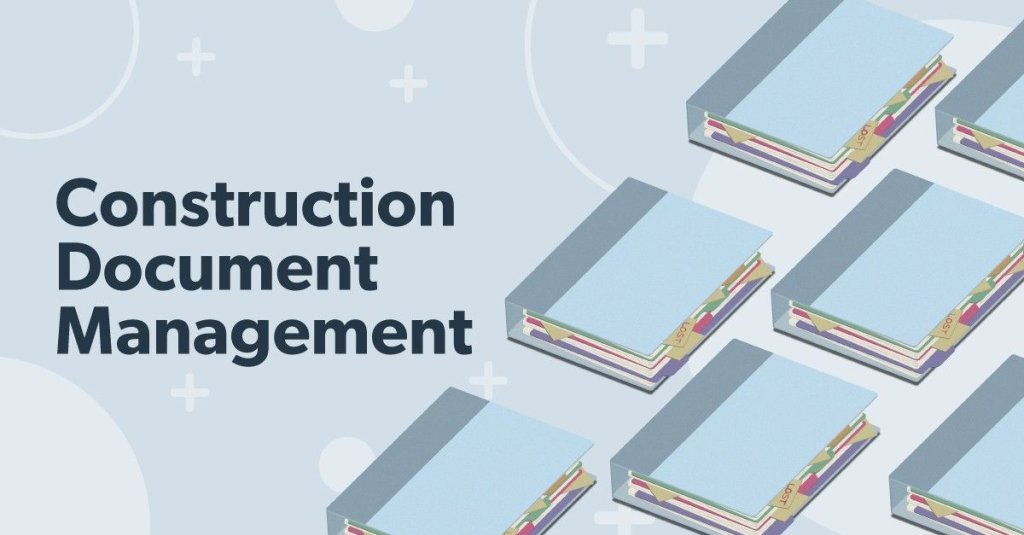Efficient Construction Document Management Solutions for each Task
Efficient Construction Document Management Solutions for each Task
Blog Article
Optimizing Job Collaboration: Engineer's Best Practices in Building And Construction File Management
In the complex world of building tasks, the reliable monitoring of construction documents stands as a cornerstone for success. Amidst this complexity lies an important concern: exactly how can designers enhance cooperation procedures to improve job results?
Leveraging Cloud-Based Platforms
Leveraging cloud-based systems is an essential approach for modern architects in optimizing construction document monitoring processes. By transitioning from standard paper-based systems to cloud services, engineers can enhance collaboration, enhance record accessibility, and enhance general job effectiveness. Cloud-based platforms supply architects the ability to shop, share, and upgrade building documents in real-time, ensuring that all employee have access to one of the most present information no matter their area. This availability promotes smooth communication and coordination amongst job stakeholders, resulting in less errors and delays in the building and construction process.
Furthermore, cloud-based platforms supply a secure atmosphere for saving sensitive task info, supplying encryption, normal backups, and individual permission settings to shield data stability. Engineers can also take advantage of the scalability of cloud solutions, enabling them to readjust storage capability and capability based on project needs. Overall, leveraging cloud-based platforms equips engineers to optimize their building record management procedures, driving better collaboration, effectiveness, and success in their tasks.
Implementing Version Control Solution
Having actually developed the advantages of cloud-based platforms in building and construction file management, designers can currently improve their record control procedures by implementing Version Control Systems. Version Control Systems (VCS) are necessary devices that track adjustments in documents, ensuring that staff member are always working with the most up to date and most accurate information. By implementing VCS, architects can maintain a centralized database where all task documents are saved, making it possible for smooth cooperation while decreasing the threat of mistakes and version conflicts.
This function is particularly useful in construction jobs where design versions and modifications are typical. This openness not only boosts accountability yet also aids in dealing with disagreements or discrepancies that might emerge during the task lifecycle.
Establishing Communication Methods
To ensure effective and reliable task coordination, engineers must establish clear and robust interaction protocols within their construction paper monitoring processes. Communication procedures specify the methods, frequency, and channels whereby staff member exchange details, updates, and responses. One important element of developing these methods is determining a centralized communication system where all project-related conversations and paper sharing can take area. This system can be a job administration software application, e-mail strings, or cloud-based storage space remedies. By setting guidelines on how information is disseminated and how staff member communicate with each other, designers can enhance the circulation of information and stop miscommunications or hold-ups in the building process.
Additionally, interaction protocols ought to additionally include guidelines on just how to manage conflicts, adjustment orders, and immediate problems that may develop throughout the job lifecycle. Establishing a structured approach to interaction makes sure that all stakeholders are on the very same web page, promotes openness, and eventually adds to the successful conclusion of the building and construction project.
Utilizing BIM Software Program for Sychronisation
BIM software plays an essential role in boosting sychronisation amongst job group participants in the construction sector. Building Info Modeling (BIM) facilitates cooperation by offering a central platform where engineers, engineers, contractors, and other stakeholders can interact in a worked with manner. Via BIM software application, task participants can access and upgrade a common design which contains comprehensive information regarding the structure design, building and construction components, and job timetables.

Furthermore, BIM software program enables real-time collaboration and interaction among group members, despite their physical place. Through cloud-based BIM systems, project stakeholders can access the current job information, track modifications, and make informed choices promptly. On the try here whole, leveraging BIM software application for control improves task effectiveness, performance, and ultimately brings about successful task outcomes.
Ensuring Information Safety And Security and Conformity
In the realm of building record administration, guarding data stability and ensuring regulative conformity are paramount considerations for engineers and other project stakeholders. Architects have to carry out robust security steps to secure sensitive project info from unapproved accessibility or violations. Using secure cloud storage options with security methods and access controls can assist alleviate threats associated with data theft or loss. Consistently updating software and systems, carrying out safety audits, and giving team training on information security best practices are vital steps in preserving a safe setting for building and construction record management.

Conclusion
In final thought, engineers can enhance task collaboration in building and construction document administration by leveraging cloud-based systems, executing variation control systems, establishing communication methods, utilizing BIM software application for control, and guaranteeing information security and compliance. These ideal practices help enhance the building and construction process, enhance interaction amongst project stakeholders, and enhance effectiveness in task delivery. By following these standards, engineers can properly manage construction files and help with successful job outcomes.
Through BIM software application, job individuals can access and upgrade a common version that contains comprehensive info regarding the building style, building parts, and task timetables.
Via cloud-based BIM platforms, project stakeholders can access the latest project information, track changes, and make informed choices promptly - construction document management. Overall, leveraging BIM software for control boosts task effectiveness, efficiency, and eventually leads to successful project outcomes
In conclusion, architects can maximize task partnership in building file management by leveraging cloud-based systems, applying variation control systems, establishing communication methods, making use of BIM software program for sychronisation, and guaranteeing data security and conformity. These finest practices aid enhance the building process, boost interaction among project stakeholders, and enhance effectiveness in job distribution.
Report this page